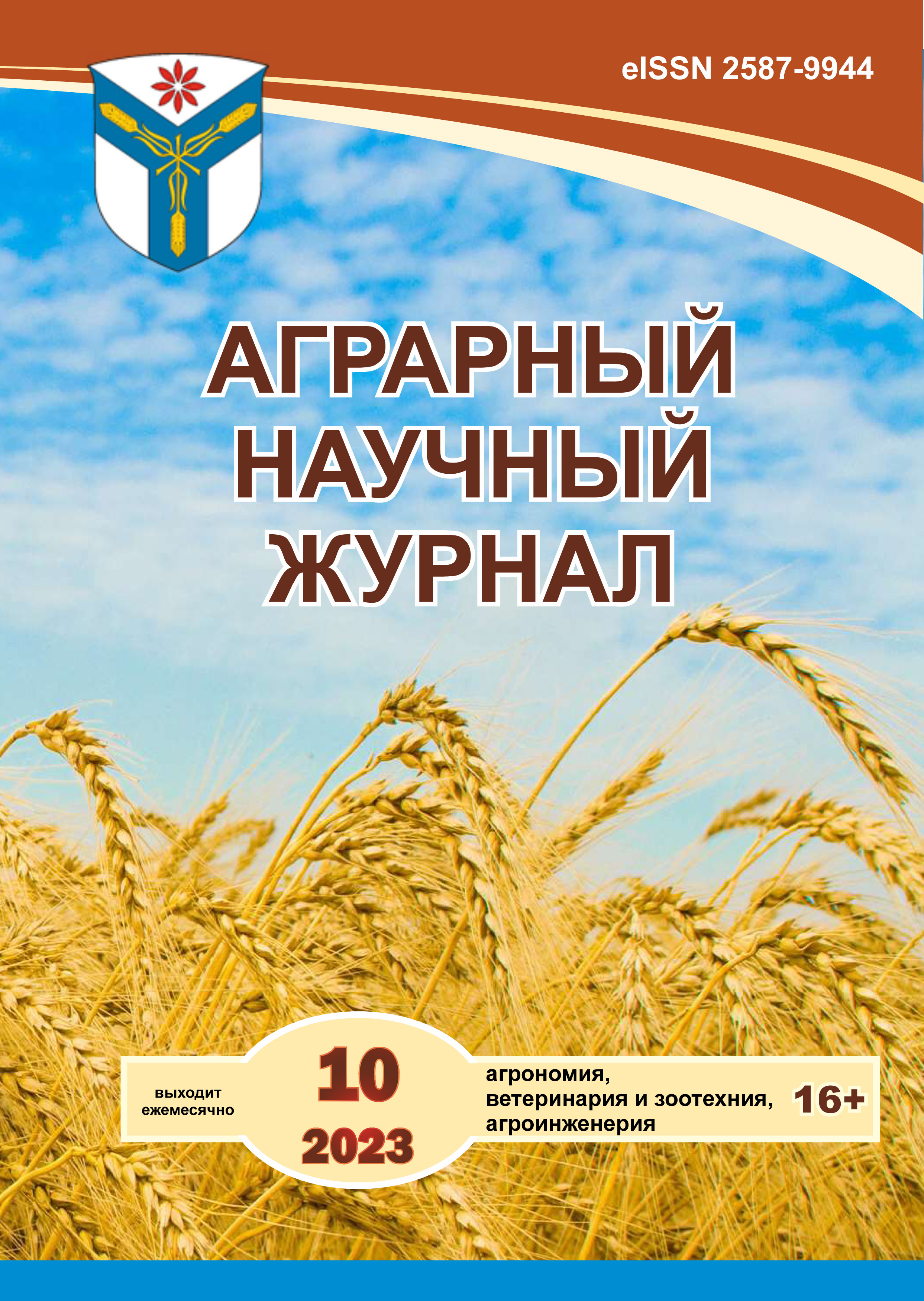Features of the vital activity of cereal aphids in the North-West of Russia
DOI:
https://doi.org/10.28983/asj.y2023i10pp26-32Keywords:
cereal aphids, monitoring, model plants, air temperatureAbstract
The publication presents data on long-term monitoring of the dynamics of the number of cereal aphids on spring grain crops in the Pushkinsky district of St. Petersburg and the Tosnensky district of the Leningrad region. The appearance of winged parthenogenetic females in the fields in the biotope of grain crops was noted in the first decade of June, the maximum number of aphids - in the second decade. Over the years of observations, outbreaks of mass reproduction were in 1999, 2002, and 2021. The analysis is carried out of the dependence of the number of aphids Rh. padi on the weather conditions of the region. The correlation between the number of aphids on wheat plants and the average monthly April air temperatures was low (r= 0.31), it was higher between the number of insects and the June average monthly air temperatures (r=0.57). At the same time, the average monthly air temperature in April and June 1999 and 2002 were higher than the average long-term indicators. This indicator turned out to be the most effective between the sum of effective temperatures for the spring-summer period (April May, June) and the number of aphids (r= 0.77). The correlation coefficient between the amount of precipitation during this period and, accordingly, the number of aphids turned out to be negative (– 0.6). It is assumed that the degree of pest population of plants in the summer period depends on the number of eggs laid by oviparous females in the previous autumn. In our studies, the correlation coefficient between these indicators was 0.52. One of the most important entomophages of cereal aphids is the beetle Coccinella septempunctata L. Over the years of observations, the number of predators varied from 0.2 to 5 individuals per 1 model site. During the years of mass reproduction of aphids in 2002 and 2021, the number of coccinellids per model site was low and equal to 0.2-0.5. The large grass aphid Sitobion avenae F. appears in the fields of the region in early July. The largest number of species was recorded in 2016, 2020,2022. In the experiments of 2022, the insect preferred spring wheat and oats, compared with barley.
Downloads
References
Алехин В. Т., Михайликова В. В., Михина Н. Г. Экономические пороги вредоносности вредителей, болезней и сорных растений в посевах сельскохозяйственных культур. М.: Росинформагротех, 2016. 73 с.
Берим М. Н. Методы мониторинга злаковых тлей // Защита и карантин растений. 2014. № 6. С. 24–25.
Берим М. Н. Наиболее вредоносные виды тлей на Северо-Западе России // Защита и карантин растений. 2014. № 9. С. 29–30.
Верещагина А. Б., Гандрабур Е. С. Разнообразие растений в связи с их пригодностью для питания тлей // Информационный бюллетень ВПРС МОББ. 2017. № 52. С. 58–62.
Кривенко А. И., Шушковская Н. И. Видовой состав насекомых агробиоценоза пшеничного поля и контроль их численности // Агробиология. 2015. № 2(121). С. 61–66.
Лакин Г.Ф. Биометрия. М.: Высш. шк., 1980. 292 с.
Николаева З. В., Тимофеева Н. Ю. Тли – вредители зерновых культур в Псковской области // Наукосфера. 2021. № 1-1. С. 123–128.
Погода и климат [Электронный ресурс]. http:// pogodaiklimat.ru> Saint- Petersburg> (дата обращения 18.04.2023).
Радченко Е. Е. Устойчивость культивируемых злаков к тлям // Аграрная наука. 2019. № 52. С. 135–138.
Gandrabur E. S., Vereshchagina A. B. Formation of the number of Rhopalosiphum padi (L.) (Homoptera, Aphidoidea) when feeding on two genotypes of its primary host under the influence of different climate conditions in a North-West Russia // In: XVIII Intern. Plant Protection Congress (24–28 aug. 2015. Berlin). Berlin, 2015. P.710–711.
Radchenko E. E., Abdullaev R. A., Anisimova I. N. Genetic resources of cereal crops for aphid resistance // Plants. 2022. Vol.11. No. 11. 1490.
Downloads
Published
Issue
Section
License
Copyright (c) 2023 The Agrarian Scientific Journal

This work is licensed under a Creative Commons Attribution-NonCommercial-NoDerivatives 4.0 International License.








